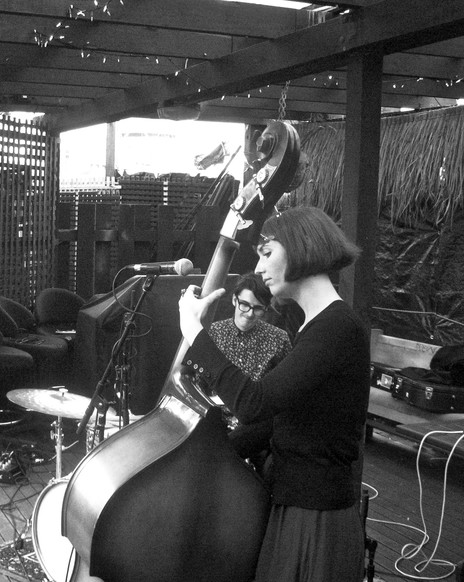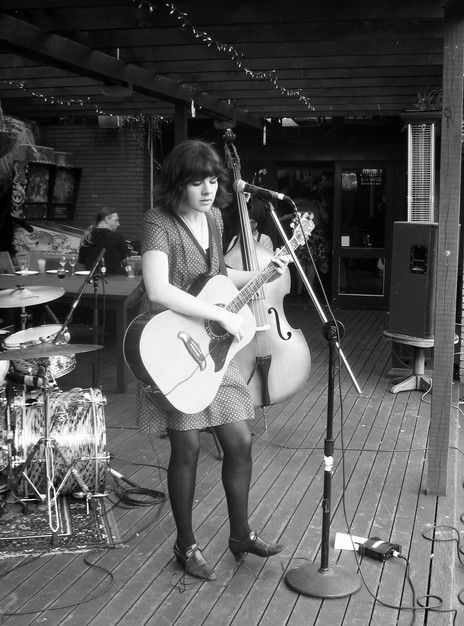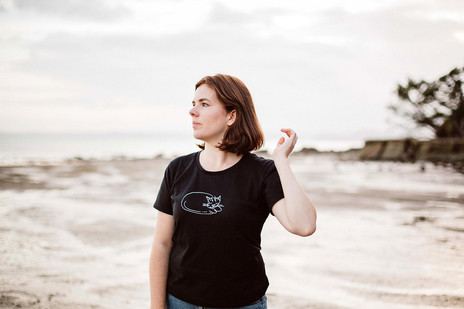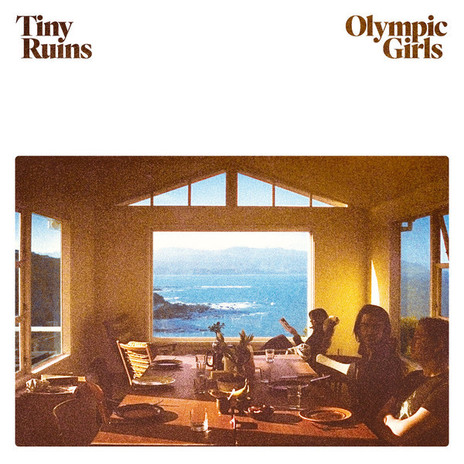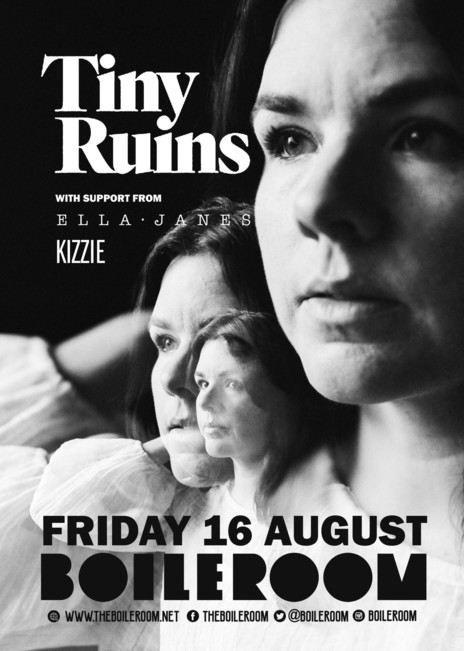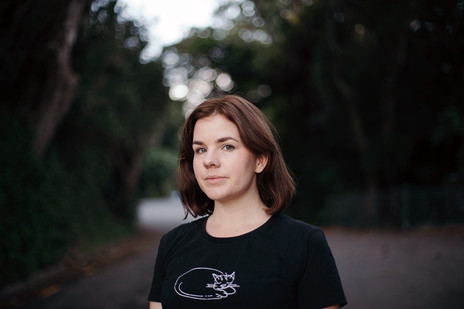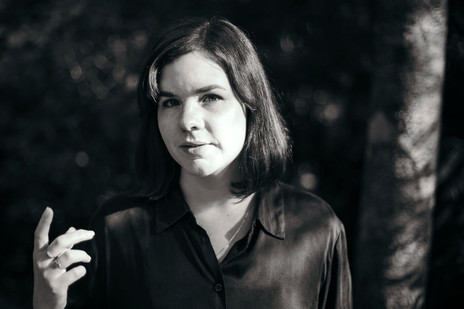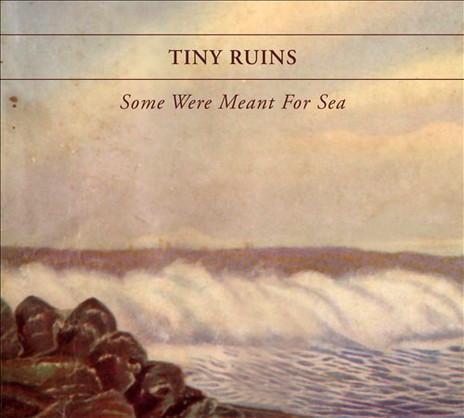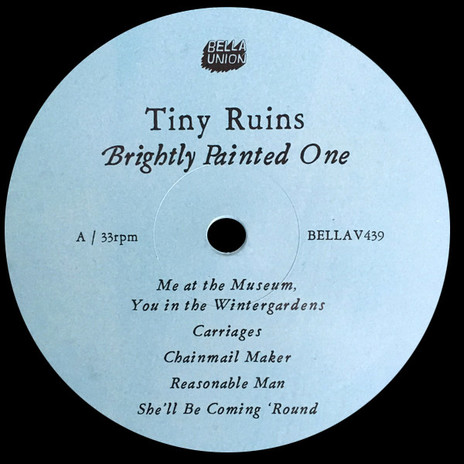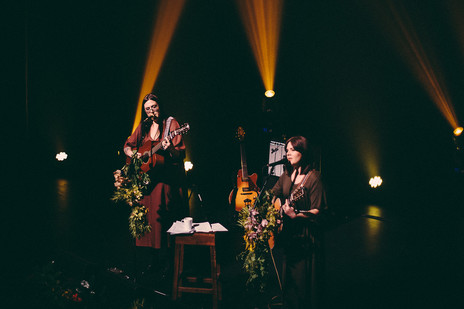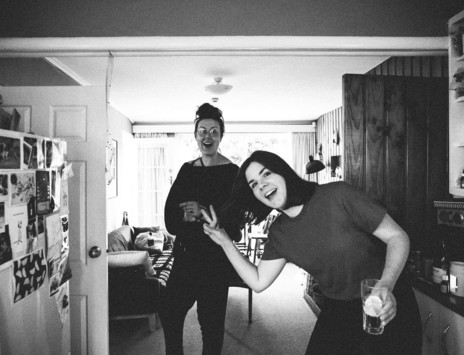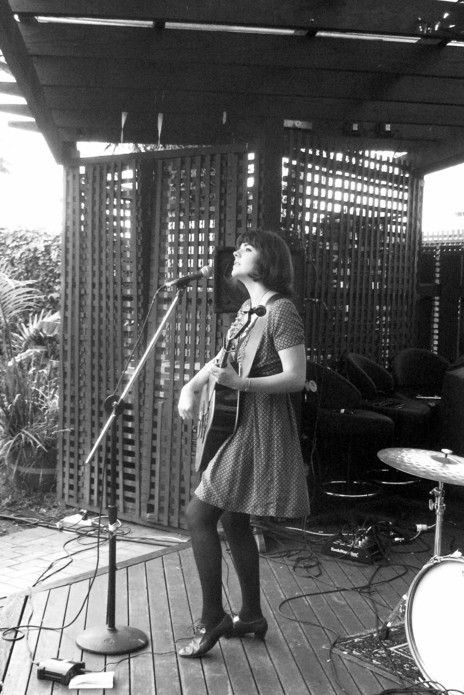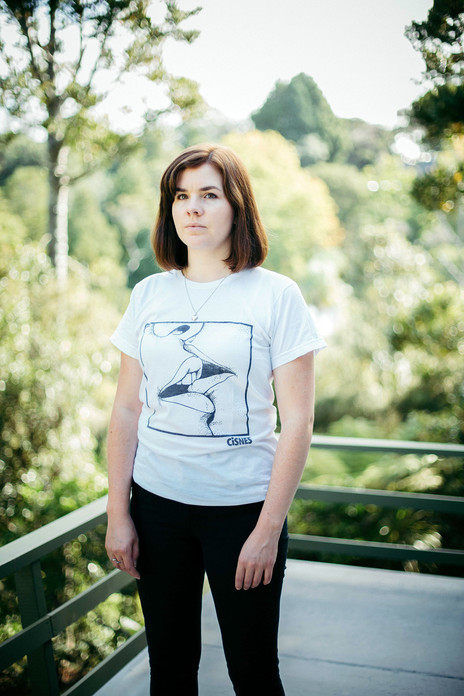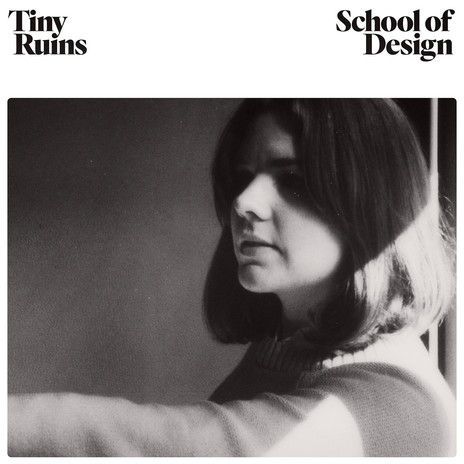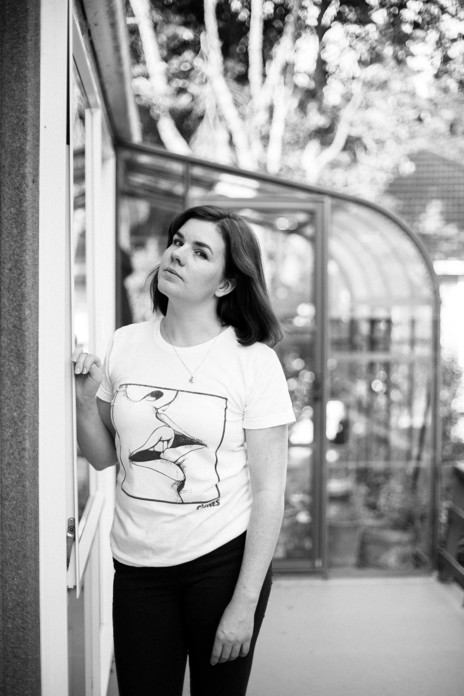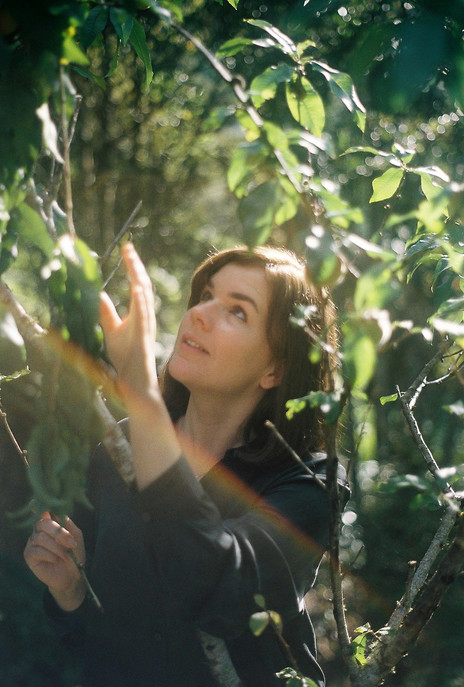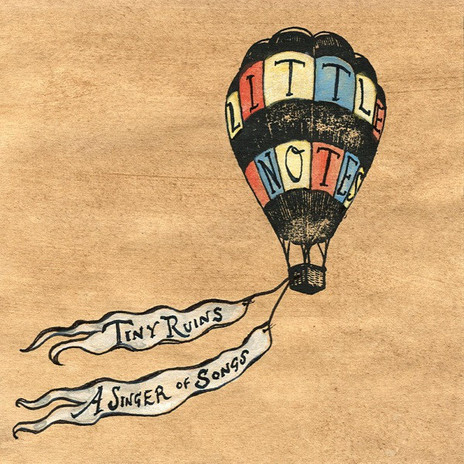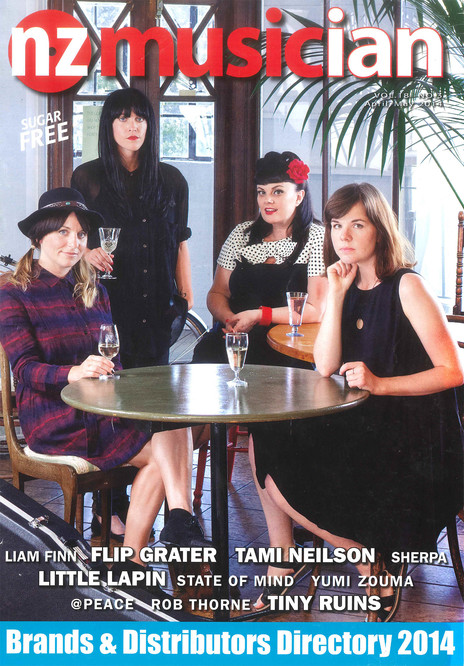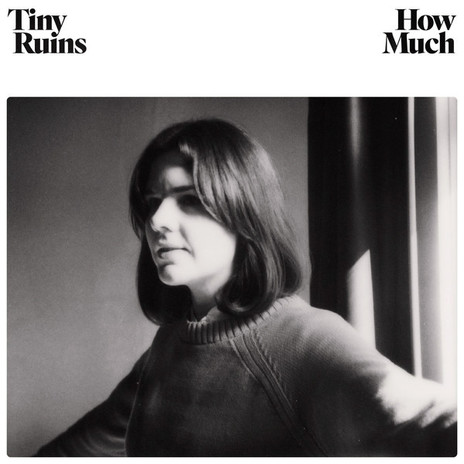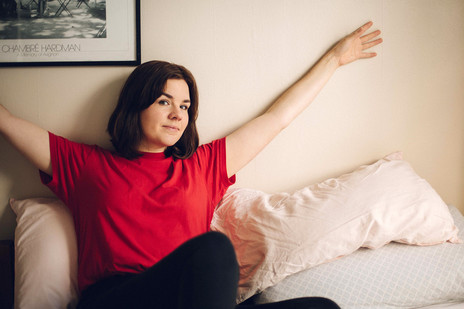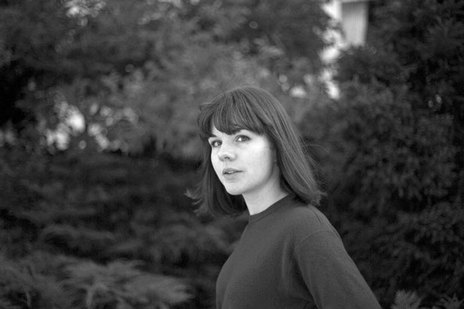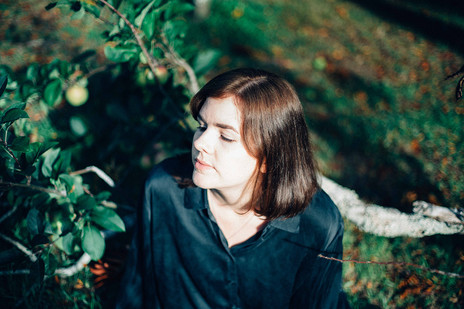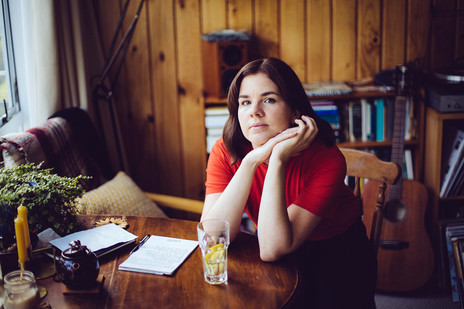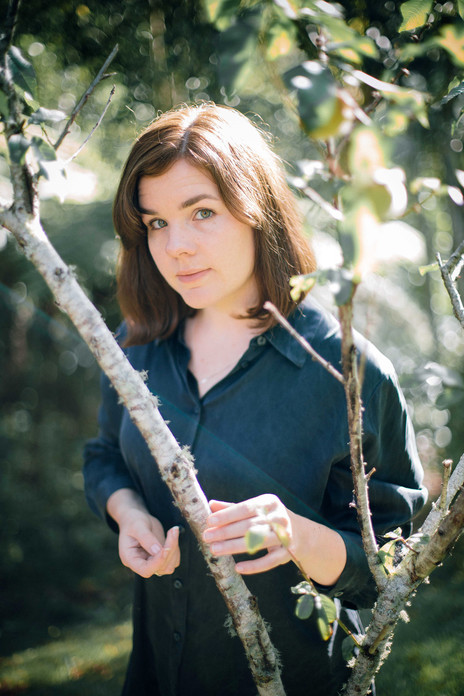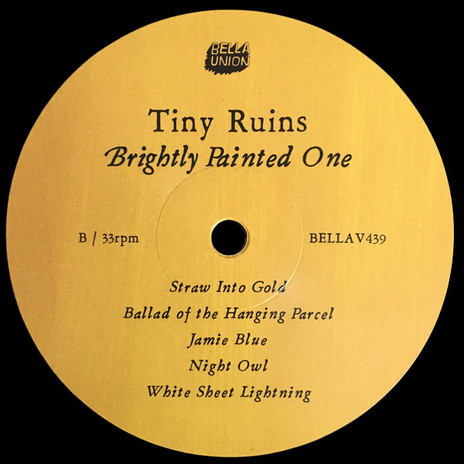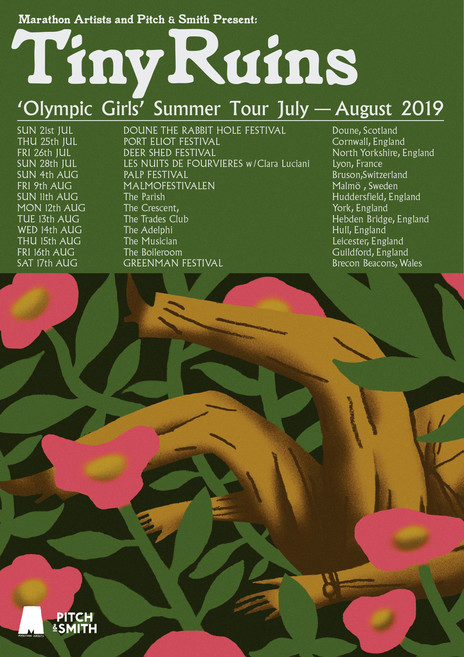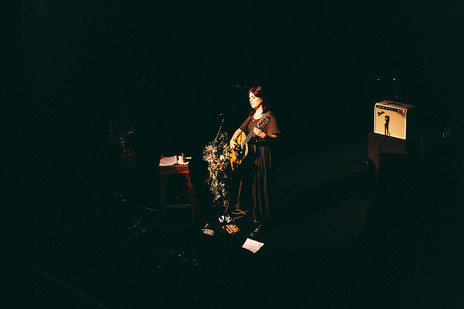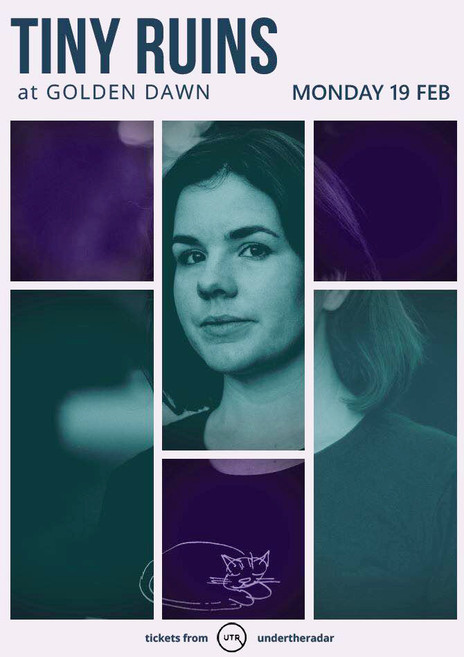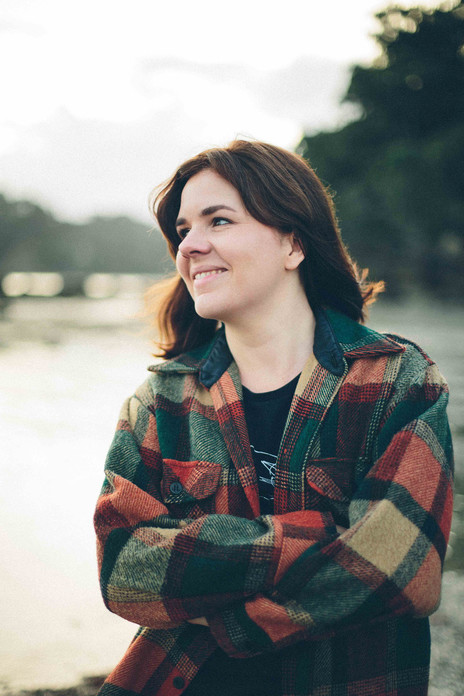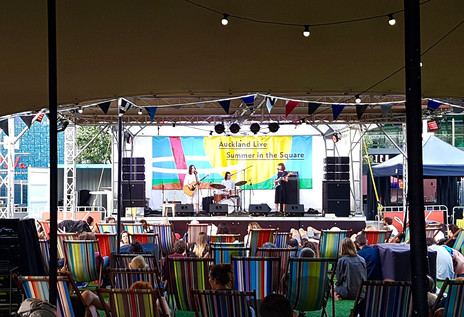It’s perhaps unsurprising that Hollie Fullbrook’s first recorded song was based on a political uprising in Copenhagen. Still, it might come as a slight shock that the folk artist was only seven years old at the time. ‘But The Danish Flag’ was derived from accumulating small tooth-pick flags, gifted to her by her best friend’s Danish mother. The kitsch flags gave her an idea to write a song about people ripping down a flag in a market place.
Born in Bristol in 1985, Fullbrook’s parents introduced her to the archetypal 20th-century songwriters: The Beatles, Bob Dylan and Neil Young. They also encouraged her to listen to prominent folk-pop figures such as Tanita Tikaram, Lucinda Williams and Gillian Welch. She began learning the cello at the age of seven and played it quite seriously into her late teens.
When Fullbrook was 10 her father accepted a job in Auckland and the family moved to New Zealand. In a 2014 NZ Musician interview, she described Avondale College’s music department as her sanctuary. “I was in the classical music groups as a cellist. I really wanted to be in with the cool guys, the jazz/rock guys, though. I don’t even think I auditioned, but I remember I thought, ‘Could I possibly sing in that style?’ and felt I was in no way good enough. I was no trained singer. I do not have that voice, and I think Paul Norman, the teacher, knew that.”
At the impressionable age of 13, Fullbrook’s third-form English teacher taught her class the W B Yeats poem, ‘The Song of Wandering Aengus’. Fullbrook was familiar with Irish folk singer Christy Moore’s version of the poem from her parents’ music collection. This discovery would later be a prominent theme in the collaborative 2015 mini album/EP Hurtling Through that she recorded with Hamish Kilgour during her New York tour. Fullbrook would later cover ‘Song of Wandering Aengus’ using Moore’s chord progressions.
In her gap year, Fullbrook travelled with her guitar on Greyhound buses across the US.
A self-described socially awkward teenager, Fullbrook utilised her gap year by working as a lifeguard and speedboat driver on a summer camp lake in upstate New York. She then travelled on Greyhound buses across the US with her guitar. She did a little busking; her guitar was a great conversation starter. At that time, she saw herself as a Kerouac character, later acknowledging that reference was little cringe-worthy. Her chosen mode of transportation was not only affordable but offered Fullbrook insight into the lives of many distinctive characters, including a woman who confidently handed out nude photos of herself to passengers.
While travelling overnight on a bus from Texas to Chicago, she came across a group of men who were returning home after being released from prison. They warmed to her and discussed music, and critiqued her CD collection. But there was one exchange with a man that had a profound effect. She recalled with RNZ’s Kirsten Johnston meeting a man who wasn’t much older than her, returning home after serving three years for drug possession.
“One of the conversations that we had was about the way that they watched the Olympics while they were in prison. Specifically, the gymnastics. That being one of the only ways of seeing or experiencing the freedom ... the glory of the outside world. Watching these kinds of displays of athleticism and beauty and shiny costumes, and that contrast with the prison environment.” This significant memory would later return over a decade later, in the 2019 album and title track ‘Olympic Girls’.
Returning to New Zealand, she moved to Wellington. She studied Law, English and Theatre at Victoria University. A significant moment that shaped her songwriting was when she was asked to write music was for a university theatre production of Twelfth Night. The director, who was also her lecturer, asked the students to draw inspiration from the music of Tom Waits.
Fullbrook composed ‘The Bird In Thyme’, a song that later featured on her first album, Some Were Meant For Sea. In a 2014 interview she told Graham Reid, “I was thinking in theatrical terms and trying to think in a different frame of mind. The songs became a bit darker and more cryptic, the lyrics a bit more coded. That’s where I see the beginnings of the Tiny Ruins songs.”
In her final year at university, Fullbrook’s friends encouraged her to perform at open mic nights. Uploading her demos and live recordings to her Myspace page, Fullbrook (under the name Hollie Fu) began to attract an online listenership from overseas. It was at this time where she decided to perform under a different moniker.
On Myspace, using the name Hollie Fu, Fullbrook began to attract an online listenership from overseas.
The name came to her while reading the passage from Jean-Paul Sartre’s novel Nausea, “waking up to fresh ruins”. She interpreted it as investing all your effort into something, perhaps a relationship, only to find it disintegrate.
As she was reading this, she was listening to 1940s band leader Tiny Bradshaw’s ‘She’ll Be Coming Round the Mountain’. The name Tiny Ruins was born as she felt like it fitted well with the songs she had written at that time.
With only six months left in training for completion of her law degree, Fullbrook decided against working in the profession. She explained in a 2014 NZ Musician feature, “I finished mainly out of stubbornness. I came out of it very disillusioned about how everything works in the world and feeling even more lost. It’s the kind of degree that makes you feel like you don’t know anything.”
Fullbrook’s friend, Belgian folk singer Lieven Scheerlinck, agreed to tour northern Spain with her in 2010. Following the tour, they co-wrote and recorded her first EP, Little Notes, in his Barcelona home studio.
After the EP was released, Spunk Records approached her to make an album, which would become Some Were Meant For Sea.
Outside of South Melbourne, Fullbrook recorded with guitarist-producer J Walker in his Gippsland home studio, which was formerly a general store. They also recorded inside a school hall that had closed its doors in the 1970s. Some of the original decor was intact, including a portrait of the Queen and the original curtain netting. They had to re-record and adjust the schedule from day to night as there were birds nesting. If you listen carefully, the sound of birds appears on the album. Walker placed microphones around the space so that the recording gathered ambience and diegetic reverb from the room.
‘Priest With Balloons’ came from reading a disheartening newspaper article about the tragic death of Brazilian Catholic priest Father Adelir Antônio de Carli. An experienced skydiver, de Carli had hurled himself off a cliff with helium balloons tied to his body to raise money for a stop for truck drivers. Searchers were unable to find his body and only discovered the remains of his deflated balloons.
Another article that appears on that song is from a town in Romania where traffic controllers were given ballet lessons so they would be more noticeable. Ultimately, the song is about the absurdity in the world and how truth is stranger than fiction.
BBC World Service hailed it as “One of the top five albums of 2011” and it was a finalist for the Taite Music Prize in 2012.
The UK tour that was organised for the album was put on hold due to a scooter accident while Fullbrook visited a friend in Zanzibar. After losing control in a forest, she broke her hand, foot and shoulder. Fullbrook made it safely back to New Zealand, ready to work on her next album.
Now signed to the British label Bella Union, the album Brightly Painted One appeared in 2014, with additional band members Cass Basil on bass and Alex Freer on drums. Tom Healy recorded the album over three weeks, and once again, it gained international attention.
In 2013, Fullbrook met Hamish Kilgour in New York while playing a set of shows together for a week.
In 2013, Fullbrook met Hamish Kilgour in New York while playing a set of shows together for a week. Tiny Ruins was only able to tour solo due to limited funds and Hamish was happy enough to offer rhythmic backup.
When she returned for her US tour, they met up again, collaborating on an EP together: Hurtling Through, a seven-track mini-album influenced by folk songs and featuring the poems of Yeats. They began recording in late 2013 in producer Gary Olson’s Brooklyn basement – including a Yeats poem – before hopping on a flight the next day back to New Zealand.
A year later, now with the full Tiny Ruins band, they did more recording, and Fullbrook recorded her cello parts when back in New Zealand. The album was hailed as being a little grittier than Tiny Ruins’ previous work.
Coincidence or self-fulfilling prophecy? In September 2013 Fullbrook was discussing David Lynch’s work with a friend just the night before he tweeted “Dear Twitter Friends, I heard a group I really like called Tiny Ruins. You should check this out.”
In charge of curating the soundtrack for the Hunger Games, Lorde emailed Fullbrook, asking if she’d be interested in working on a song with Lynch. Fullbrook leapt at the opportunity and in 2014, Lynch produced Fullbrook’s ‘Dream Wave’ in his Hollywood recording studio.
She described the process of working with Lynch as surreal; he directed her and they would try things out in the studio. Although it didn’t make the final cut of the soundtrack, two versions of ‘Dream Wave’ were released, one an instrumental featuring her bandmates.
After returning to New Zealand from her long touring stint, Fullbrook found it difficult to write her next album. The song ‘One Million Flowers’ cured her writer’s block and gave an understanding of the album as a whole. The title track ‘Olympic Girls’ introduces the listener to the album’s theme of one’s own freedom in our outer and inner worlds.
It was a slow but steady recording process that took over a year and a half to assemble. With Tom Healy as producer and now guitarist, the band was signed to Milk Records, an Australian label founded by Courtney Barnett. The recordings that emerged on the Olympic Girls album were psychedelic dream-pop, with more experimental instrumentation. It’s a complex collection of songs, with ‘Sparklers’ having an unconventional 11/8 time signature.
The recordings on the ‘Olympic Girls’ album were psychedelic dream-pop.
Olympic Girls was a 2020 Taite finalist, praised by critics. “Part of the charm of ‘Olympic Girls’ lies in the layers of mystery in each song. Inspired by literature, science, nature and human experience, these mysteries lie waiting to be carefully unfolded ...” (God Is In the TV)
Fullbrook revealed her songwriting process in an APRA masterclass in 2020, while New Zealand was slowly returning to normality from the COVID-19 lockdown. She gathers material such as real life experiences, images and recording demos, then unravels her thoughts by writing into a master document consisting of years of writing, held together with a bulldog clip. It allows her to percolate and find the ideas that stand out to her.
In late 2020 Fullbrook toured New Zealand with Nadia Reid, under the name Reid & Ruins. She also made a guest appearance on two tracks of The Phoenix Foundation’s Friend Ship album.
With lyrics both introspective and detailed – and whether performing and recording solo, as a band, or collaborating with other artists – Tiny Ruins continues to weave her way into the national psyche.
